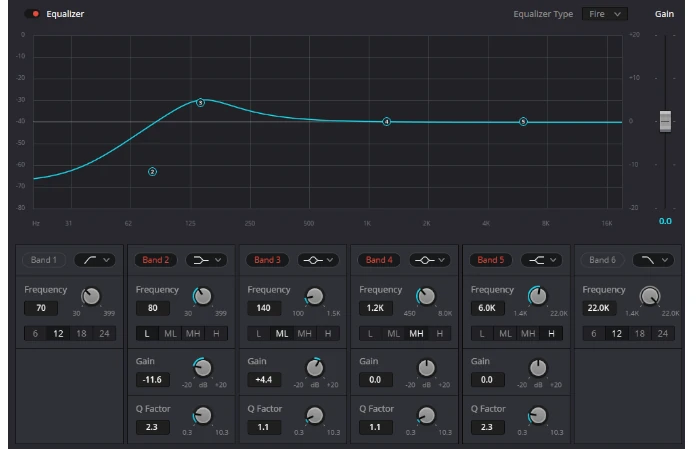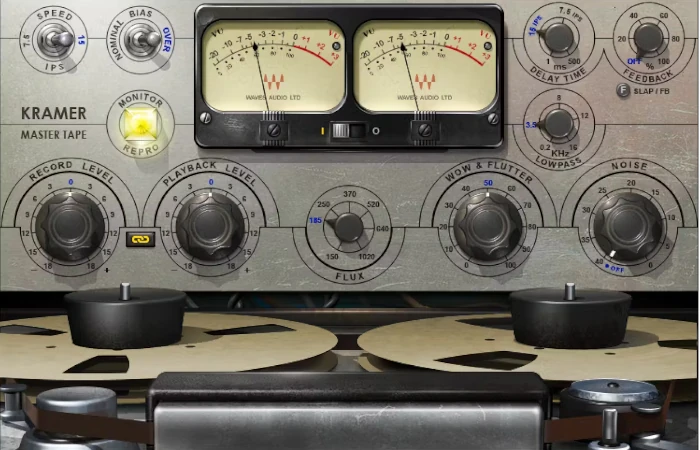Imagine hanging out at a live concert where the bass line just grabs you by the gut, making your heart sync perfectly with those electrifying beats. You can’t help but sway along, right? Bass and low-frequency elements are undeniably the soul of music—they’re the pulse, the groove, and often the key to moving your listeners. Whether you’re a budding producer or a seasoned music enthusiast, nailing the art of mixing these elements is crucial. Dive in with us on this sonic journey as we unravel powerful, insider techniques that will elevate your tracks with depth, balance, and irresistible energy. Get ready to step up your game and captivate your audience!
1. Equalization (EQ) Techniques for Bass Clarity and Separation
Equalization (EQ) is an essential tool for achieving clarity and separation in bass and low-frequency elements within a mix. By carefully adjusting the frequency balance, EQ allows each sound to occupy its own space in the sonic spectrum, preventing muddiness and frequency masking.
Identify and Isolate Problem Frequencies
Begin by identifying the fundamental frequency of your bass instrument, which typically ranges from 40Hz to 100Hz. Sweep through the low-end frequencies using a parametric EQ to pinpoint any problematic areas where the bass might be clashing with other elements. For instance, a kick drum might share some frequencies with the bass guitar. By using a narrow EQ cut on the bass track at the kick drum’s fundamental frequency, you can help both elements stand out.
Use High-Pass Filters Judiciously
High-pass filters can be your best friend when trying to achieve bass clarity. Gently roll off the low-end frequencies of non-bass elements to prevent them from muddying the mix. For example, apply a high-pass filter to synth pads, guitars, and vocals, setting the cutoff frequency around 100Hz. This ensures that the bass and kick have enough room to breathe.
Boost and Cut Strategically
When boosting bass frequencies, use a broad Q to avoid creating a boomy sound. A small boost around the fundamental frequency can add warmth, while a slight cut around 200-300Hz can reduce muddiness. On the other hand, a boost around 700Hz to 1kHz can enhance the presence of the bass, making it more audible on smaller speakers.
Practical Example

Consider a case where a bass guitar and a kick drum are competing in the mix. You might cut the bass guitar slightly around 60-80Hz where the kick drum is most prominent, and boost the bass guitar slightly around 100-120Hz where it has more presence. This creates a complementary relationship between the two, allowing each to be heard clearly.
By applying these EQ techniques, you can achieve a well-defined low-end, ensuring that your bass lines are both powerful and distinct, contributing positively to the overall mix.
2. Sidechain Compression for Rhythm and Groove Management
Sidechain compression stands out as a secret weapon in the arsenal of music producers, especially when it comes to mixing bass and low-frequency elements. This technique allows you to create a dynamic interaction between your kick drum and bass, ensuring that both elements can coexist harmoniously without muddling the mix.
Understanding Sidechain Compression
At its core, sidechain compression involves using the signal of one audio source to trigger compression on another. Typically, the kick drum is used as the trigger, compressing the bass every time the kick hits. This creates a rhythmic pumping effect, which is crucial in genres like EDM, where the kick and bass need to occupy their own sonic space.
Practical Implementation
Imagine you’re working on a dance track. You’ve got a thumping kick and a deep bassline, but together, they sound muddy. Enter sidechain compression: by applying a compressor on the bass channel and setting the kick as the sidechain input, the bass will duck momentarily whenever the kick plays. This provides the kick with its own space to punch through the mix, giving your track a tighter groove.
Tips for Effective Use
- Adjust the attack and release settings of the compressor to tailor the pumping effect. A faster attack will make the ducking more pronounced, while a slower release can smooth the transition back to full volume.
- Experiment with the threshold and ratio to find the sweet spot where the kick and bass complement each other rather than compete.
- Listen critically in context with the rest of the mix to ensure the sidechain effect enhances rather than distracts.
Case studies from producers like Daft Punk and Calvin Harris showcase how sidechain compression can transform a mix, making it punchier and more engaging. By skillfully implementing this technique, your bass elements will not only sit better in the mix but also contribute to a compelling rhythmic foundation.
3. Saturation and Harmonic Enhancement for Bass Warmth
Adding warmth to bass through saturation and harmonic enhancement is a game-changer in mixing bass and low-frequency elements. These techniques breathe life into your bass tracks, making them stand out in a mix without overpowering other elements.
Saturation is akin to the gentle distortion that occurs when you push analog equipment beyond its limits. This technique enriches the bass by adding harmonics, which are additional frequencies that enhance the sound’s richness and warmth. For instance, consider the bass guitar in classic rock tracks. The slight overdrive gives it a fuller, more present sound that cuts through the mix beautifully.

Applying saturation can be as simple as using a plugin designed for this purpose. Waves’ “Kramer Tape” or Soundtoys’ “Decapitator” are popular choices among producers. When using these tools, start with subtle settings. Gradually increase the saturation until the bass has a noticeable warmth. Always compare it with the dry signal to ensure you’re enhancing rather than overwhelming the sound.
Harmonic enhancement complements saturation by targeting specific frequencies that make the bass sound more musical. Tools like iZotope’s “Ozone” offer multiband harmonic excitation, allowing you to focus on particular frequency ranges. For a practical tip, boost the low mids slightly to add body without muddiness.
A real-life example is the bass in electronic dance music. Producers often apply saturation to make the bassline prominent on club sound systems. Experiment with different saturation levels to find the sweet spot where the bass maintains clarity and presence. This approach not only improves the bass itself but enhances the entire track’s energy and cohesion.
Techniques for Mixing Bass and Low-Frequency Elements
4. Sub Bass Layering Techniques for Depth and Power
Layering sub bass is a fantastic technique to add depth and power to your tracks. Starting with a solid foundation is crucial, especially when dealing with low-frequency elements that can easily muddy a mix if not handled properly.
Imagine you’re building a cake. The sub bass is like the base layer, providing structure and support for everything above it. Without a sturdy foundation, the entire mix risks collapsing into a mess of indistinct frequencies. By thoughtfully layering sub bass, you can ensure your track has the punch and clarity it needs.
First, choose your primary sub bass sound. This could be a sine wave or a clean bass synth patch. The key is to ensure it’s clean and free of unwanted harmonics. Next, consider adding a second layer to complement the primary sound. This could be a lightly distorted bass or a sample with a bit more character. This layer should sit just above the sub frequencies and add texture without overshadowing the primary layer.
A practical tip is to use a low-pass filter on the primary sub bass to focus solely on the essential sub frequencies, generally around 60 Hz and below. For the second layer, apply a high-pass filter to ensure it doesn’t interfere with the sub frequencies, setting it around 60-80 Hz. This separation allows each layer to occupy its own space without clashing.

Real-life application of this technique can be seen in tracks like “Titanium” by David Guetta featuring Sia. The sub bass is powerful yet controlled, providing a solid foundation that supports the rest of the track’s elements. By carefully balancing the layers and applying subtle EQ adjustments, you can achieve a similar effect in your own productions.
Remember, experimentation is key. Try different sounds, adjust filter settings, and listen critically to how the layers interact. With practice, you’ll develop an ear for creating sub bass that’s both deep and impactful.
5. Spatial Processing and Stereo Imaging for Low
When it comes to mixing bass and low-frequency elements, spatial processing and stereo imaging play crucial roles. While the lower frequencies are often associated with mono compatibility, understanding how to manipulate their spatial characteristics can enhance your mix significantly.
Understanding the Basics
First, it’s essential to recognize that low frequencies are less directional to human ears compared to higher frequencies. This is why bass elements are typically centered in the mix—it’s where they pack the most punch and clarity. However, creative use of stereo imaging can provide new dimensions without compromising the mix’s integrity.
Practical Tips for Stereo Imaging
One effective technique is using mid/side processing. By isolating the mid (center) and side (stereo) components of your track, you can keep the low end in the center while allowing higher harmonics to spread out, creating a sense of width. For example, you can apply an EQ to boost the mid frequencies in the side channel, enhancing the stereo perception of higher harmonics while keeping the bass tight and centered.
Additionally, consider using stereo enhancers or Haas effect plugins for elements that complement the bass, like sub-bass harmonics or pads. These can add richness and depth without directly affecting the core low frequencies.
Real-Life Application
Take the approach used by electronic music producers such as Flume. He often uses spatial processing to create expansive, immersive tracks without losing the power of his basslines. By subtly widening the stereo image of supporting elements, you can maintain a solid bass presence while enriching the overall soundscape.
Remember, while experimenting with stereo imaging for low frequencies, always check for mono compatibility. Use phase correlation meters and listen on various playback systems to ensure your mix translates well across different environments.
Conclusion: Mastering the Art of Bass Mixing
Mixing bass and low-frequency elements is more than just about making them audible; it’s about creating a balance that supports the song’s emotional and rhythmic core. We’ve journeyed through a landscape of crucial techniques that can transform your mixes from muddy to magnificent.
Understanding the importance of carving out space using EQ allows each element of your mix to breathe and contribute effectively. Techniques such as utilizing sidechain compression help maintain dynamic impact and clarity, ensuring that your bassline doesn’t overpower other essential aspects of your music. Layering is another tool to enrich your bass sound, giving depth and character that a single track might lack.
Moreover, stereo imaging plays a critical role in how your listener perceives low frequencies. By maintaining a more mono presence for your bass while allowing higher frequencies to explore the stereo field, you gain both focus and richness. Don’t forget the potency of referencing your mix against well-produced tracks to stay on course.
Now, it’s your turn to make these tips work for you. Dive into your current projects and apply these bass mixing techniques. Experiment, listen critically, and push the boundaries of what’s possible in your mix. You’ll soon find that mastering the art of mixing bass not only enhances your overall production quality but also revolutionizes how your listeners experience your music. Start applying these principles today and feel the difference they make in your next track!

